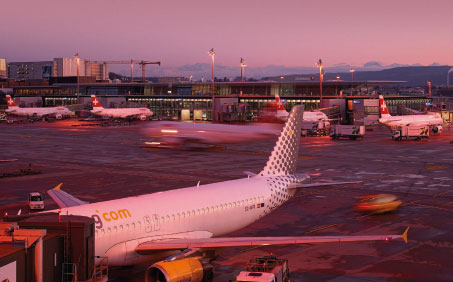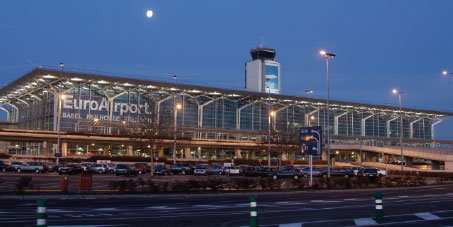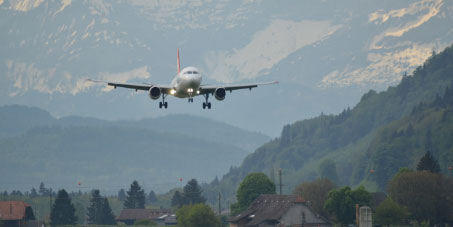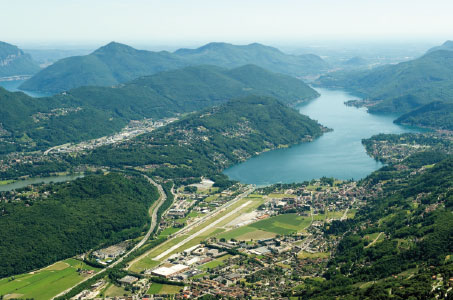The Swiss aviation landscape is one of two halves. At one end of the spectrum are its main international hubs, which have registered considerable passenger growth in the recent past, and at the other are the nation’s regional airports, on which the combined negative effects of the economic crisis and the collapse of a series of regional airlines is still having an impact. All, though, play crucial roles in the overall aviation panorama of the country, offering high-value customer experiences, and a diverse choice of destinations to the market. Development is widespread, and across the country Switzerland’s airports are making infrastructure improvements and expanding their route networks to deliver the unique Swiss qualities that are so synonymous with the nation.
Zurich International Airport

“‘Swissness’ is the very essence of our airport. It is our aim, and our passengers shall feel and receive it,” said Thomas Kern, CEO, Zurich Airport. “It also helps to differentiate Zurich from Europe’s other airports, and provides a special experience to frequent travellers.”
“‘Swissness’ is the very essence of our airport. It is our aim, and our passengers shall feel and receive it,” said Thomas Kern, CEO, Zurich Airport. “It also helps to differentiate Zurich from Europe’s other airports, and provides a special experience to frequent travellers.”
Switzerland’s busiest airport, and host of the 23rd ACI EUROPE Airport Trading Conference and Exhibition, has assembled a long list of major improvements in recent months. It has just opened a brand new VIP Lounge, is halfway through an extensive rejuvenation in Terminal 2, and is now in the planning stages of the ‘Circle’, a 180,000sqm on-airport complex just steps away from ZRH’s terminal that will offer all manner of services, and will become a focal point for business and lifestyle when it opens in 2018.
Its catalogue of upgrades doesn’t stop there. In 2014 it will expand the landside retail area by a further 1,500sqm, and is introducing a range of new retail and F&B concepts. The airport’s reputed ‘Swissness’ has historically coursed through its commercial offering: “Zurich Airport has within its travel retail and F&B offer again strengthened the aspect of ‘local flavour’, with new authentic and innovative concepts such as the recently opened Chalet Suisse restaurant and the redesigned Spirit of Switzerland shop which offers a wide range of souvenirs and Swiss products,” Kern explained.
As well as improving its infrastructure, the airport is also expanding its international connections. Etihad Airways, a new carrier to the airport, is about to establish its first flights to Abu Dhabi, and beyond this Etihad Regional has been formed to operate as a feeder service out of Zurich to various European airports.
The sum of this enticing airport offering is steady growth at Zurich. Last year’s 24.8 million-strong passenger traffic exceeded the previous year’s record by +0.3%, and its target for this year is to reach the 25 million passenger mark.
EuroAirport Basel-Mulhouse-Freiburg

Jürg Rämi, Director, EuroAirport: “We had another record year with close to 5.9 million passengers at the end of 2013, recording growth of +10% compared with 2012 (5.3 million). This growth was well above the European average.” Photograph © EuroAirport.
EuroAirport Basel-Mulhouse-Freiburg expects reasonable growth in the coming year, its Director Jürg Rämi explained. The world’s only bi-national airport, uniquely located on the borders of France, Switzerland and Germany, experienced another record year last year, with close to 5.9 million passengers having passed through its doors, eclipsing 2012’s numbers by 10%. EuroAirport is understandably confident then, in its forecast passenger growth of around 5% to 6.2 million for 2014 – especially considering the developments taking place within its route network. The point-to-point airport added six new destinations to its route network in 2013, including its eighth based easyJet aircraft, and a ninth will arrive in March this year. Ryanair will also return to Basel-Mulhouse as of April 2014, serving Dublin and London Stansted, while myriad new destinations will be implemented at the airport from the summer. easyJet will soon fly to Bastia and Montpellier in France, Brindisi in Italy, Larnaca in Cyprus and Mykonos in Greece, Kraków, Reykjavik and Sevilla in Spain. Wizz Air meanwhile will start services to Tulza in Bosnia and Herzegovina.
The increasingly diverse network will improve international connections for passengers, while the projected new EuroAirport rail-link will improve surface access to the airport. Preliminary technical studies on the projected link from Basel-Mulhouse airport to existing French, Swiss and German rail networks are planned to take place in 2014, as is the search for the project funding. The project is scheduled for realisation by 2020.
In 2013 the airport renovated and reopened its EuroAirport Skyview Lounge, which is now accessible to all of its passengers, and also opened the EuroAirport Business Center, which offers ten modular meeting rooms immediately bookable online.
Flughafen Bern-Belp

“The essence of Flughafen Bern-Belp,” said CEO Mathias Häberli, “is its short distances after touchdown – 10 minutes after landing passengers are already seated in their limousine, taxi or buses; the short distances within the airport; and perfect conditions for scheduled and charter flights, with no slot restrictions.”
On the agendas of Switzerland’s airports, the delivery of a spectacular passenger journey consistently comes top. “Flughafen Bern-Belp’s strength as an airport,” explained its CEO Mathias Häberli, “lies in making passengers’ stay an enjoyable one. Flying to Bern is a sheer pleasure for pilots, business travellers and passengers. Short distances, excellent service at the terminal, lounge and hotel reservations, limousine services, restaurant and bistro all contribute to this.”
Short distances for checking in and after touchdown are the airport’s strong suit. It takes as little as 20 minutes from entering the airport for passengers to have passed through security, and just 10 minutes after landing passengers can already be seated in their taxi or on their bus. From there, it takes only 20 minutes to reach the heart of Switzerland’s capital by car. After Zurich, Geneva and Basel, Bern is the fourth largest airport in Switzerland, and serves as an important international base due to its attractive commercial location, the federal administration and the national and international politics that take place within the region.
As was forecast, 260,000 passengers passed through Flughafen Bern-Belp last year, and the airport’s goal is to grow that number by a further 10,000 in 2014, when it will also make further progress on the extension to the airport’s infrastructure in its Master Plan 2009-2020.
“This expansion phase serves to decentralise aviation, and to improve the airport’s operational processes. Private aviation, maintenance operations and flight training are to be relocated to the new buildings along the banks of the Gürbe, while new hangars facilitate maintenance and indoor parking for private aircraft,” Häberli said.
Lugano Airport

As well as widespread infrastructure developments, Lugano Airport is looking forward to the launch of a new service in the summer to Elba Island, which will connect Lugano directly with a very interesting destination for its local market. “We are also very excited by the launch of Etihad Regional, and we are following closely the opportunities this will bring in the coming months, such as the possibility to fly to Abu Dhabi via Geneva, thus widening the options for our passengers,” CEO Alessandro Sozzi said.
“We like to describe Lugano as a ‘boutique’, where its added-value services such as the excellent customer service and the speed of operations constitute the most important element of distinction from main hubs that we can offer to our passengers,” explained Alessandro Sozzi, Chief Executive Officer, Lugano Airport. Lugano is best known for being the third financial marketplace of Switzerland, but the region also has a lot to offer in terms of tourism with its varied landscape ranging from lakeside activities to mountain trails and skiing. The airport is also the nearest gateway to other famous touristic areas in nearby Italy, such as Lake Como, only 20 minutes away.
Recent months have left Lugano facing some pressing challenges. Due to the cancellation by Darwin Airline of one of its historical routes to Rome Fiumicino, and to the difficulties experienced by Minoan Air, the carrier trying to replace it, the year 2013 disappointingly closed in the negative, with a drop of -15.6% in passenger traffic. But its marketing department is now working to close the gap, and considering the potential of the airport’s catchment area, it counts on recovering the passengers and reaching its target in the next few years. “Unfortunately this is not an easy exercise given our operational restrictions, since even though there are several airlines interested in the potential of our market, they don’t have the appropriate aircraft for operating at our airport,” Sozzi said.
The airport is currently undergoing a transitional phase, with projects aimed at adjusting the airport infrastructure to meet its market requirements. A runway extension will take place this year, and in the next few years it will continue to upgrade its infrastructure with the building of two new hangars, an apron expansion and a change to the parking layout.
“The development and modernisation of our infrastructure are the first essential steps to allow us to fully reach the traffic potential of our catchment area,” Sozzi said. “Currently our strengths lie in our tailor made services and exceptionally rapid transit time with the possibility for our passengers to check-in up to 20 minutes before departure even with luggage. These are the type of advantages we are focusing on in order to attract new high yield traffic.”







